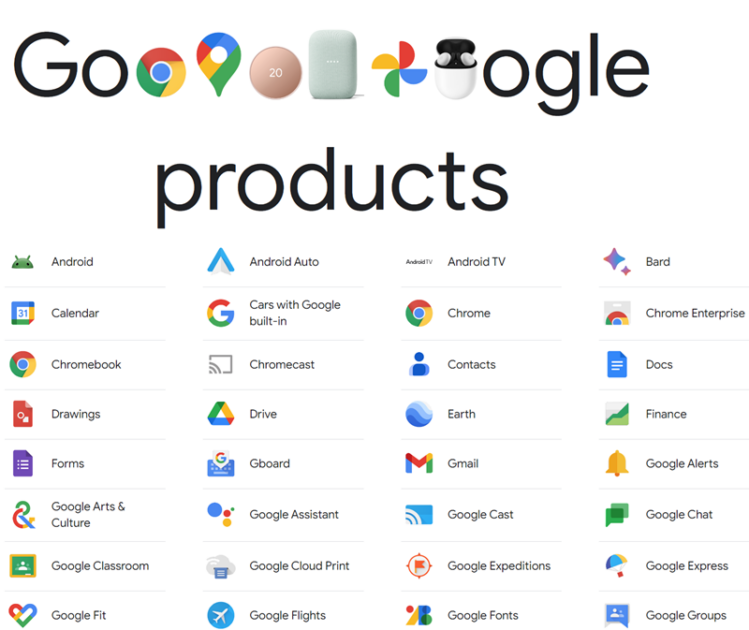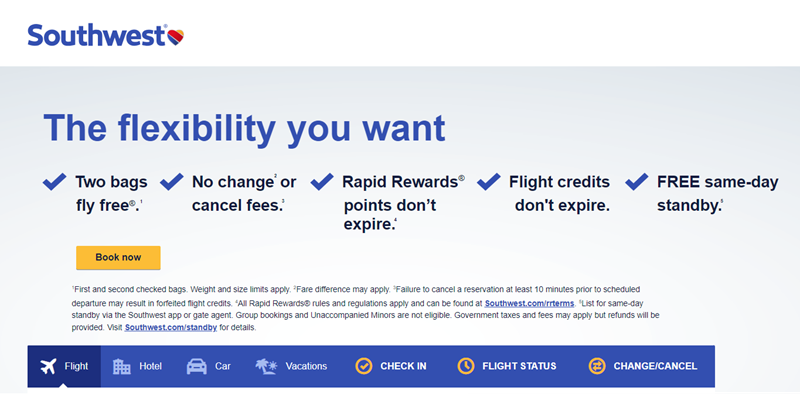Do you know companies that give preference for employee engagement and excel in their business?
A report from Gallup, which has done extensive research and surveys on the benefits of employee engagement, concluded that engaged employees make companies gain a competitive advantage and can help withstand and possibly excel in tough economic times. Even engaged employees lead to better retention, lower absenteeism, and higher productivity.
In this section, we will understand how important employee engagement is and its related factors, such as the Importance of employee engagement, employee engagement strategies with case studies, common obstacles, methods to measure employee engagement, etc.
What is Employee Engagement and Real-life Examples?
Employee engagement, unlike employee satisfaction, is a decisive factor that leads to increased productivity, loyalty, and work performance. It involves the essential elements in which employees feel inspired about their job role and commitment to organizational goals, resulting in putting extra effort into achieving great outcomes for the employer.

With an understanding of this concept, employers develop the practical ways they connect with their staff above those involved in the daily operations using such methods as recognition and appreciation schemes or organizational initiatives towards team building, which creates more meaningful experiences from work and thus boosts morale within workplaces.
As per one research study on how employee engagement drives growth, organizations with highly engaged employees achieve 22% higher profitability and 21% higher productivity.
With more than 70 client interviews and a survey of 245 global organizations, Deloitte found that company cultures affect employee innovation. Inclusive company culture leads to a 6x increase in employee innovation, while at the same time, employees were able to anticipate change effectively. Additionally, they’re twice as likely to meet or exceed their financial objectives.
The following are some top real-life examples showcasing how effective employee engagement has resulted in the best productivity and branding of the company:
#1. Salesforce
World-glorified, Salesforce ranks 8th as the best place to work in the world. Salesforce has laid a comprehensive approach towards employee engagement that ensures equality and inclusion, work-life balance in the first instance, and charitable endeavors of its employees.

Salesforce has taken the innovative model of giving back to the community whereby they give their product, equity, employee time, regular feedback mechanisms, and recognition programs for employees. In addition to that, during their annual conference, employees are given the chance to elevate neighborhood causes by putting in their time and skills.
In addition, non-profits are empowered through the Salesforce.org – Salesforce platform that links these entities to able volunteers and employees of the company. Furthermore, the company encourages the engagement of staff in community issues through Give Back Groups, which focus on a specific subject of importance for today’s society, thus making a great difference worldwide.
#2. Google
For over two decades, Google has cultivated a work culture that values creativity and innovation. Their diverse range of benefits helps employees stay energized and productive while providing ample opportunities to develop both personally and professionally.

Open communication is encouraged, allowing for meaningful collaboration among colleagues, resulting in the best possible decisions based on collective wisdom.
Its unique culture puts employees at the center of their initiatives. From Google Search, where staff is encouraged to contribute to having a sense of ownership, 20% Time, which allows individuals to dedicate a portion of their work towards personal projects, as well as tech talks enabling them to share knowledge and expertise; these collaborative efforts promote creativity, exploration, and learning.
#3. Southwest Airlines
Southwest Airlines is committed to a healthy work environment. They are consistently recognized as one of the best employers because Southwest Airlines maintains a people-oriented culture where teamwork, honest communication, and an open-door management style are highly implemented.

Employees are rewarded free and competitive pay for their efforts while feeling empowered with generous travel privileges and near-ownership of roles and responsibilities. The company’s adoption of diversity has been the key to its success, where it encompasses all employees, no matter their background or perspective, yet still continues its long-standing tradition of creating exceptional customer service experiences.
The airline has also set out to be transparent by actively listening to its employees and, in return, giving them feedback, thereby cultivating a positive atmosphere within the organization that is home.
What is the Importance of Employee Engagement?
Employee engagement does matter in quite many ways, and organizations that can create a culture of employee engagement will realize the advantages as stated below:
- Enhances productivity: Engaged employees generally have a lot of commitment and devotion to their work, and thus, they will perform better than employees who are disengaged. They also show a positive attitude and desire to serve the company so as to meet its goals over and beyond their call of duty. According to a study, engaged teams are 21 percent more productive than teams with no or low engagement.
- Improved customer satisfaction: Engaged employees are bound to render great services and pleasant experiences for the customers. They are more alert, careful, and responsive in handling the grievances of their customers. According to a report published by Oracle, companies with strong financial results have better-engaged employees, with 75% found to be engaged either highly or moderately, compared with only 47% of employees in underperforming companies.
- Increased profitability: Engaged employees are more likely compared to disengaged ones to contribute to the organization’s bottom line through their highly productive, innovative, and customer-focused approaches. One report states that companies in the top quartile of employee engagement beat their competition by 28% in EPS (Earning per share); for that, in the top decile, they beat their competition by 72%; thus engaged employees are more competitive.
- Reduces employee turnover: Engaged workers are more loyal, and they hardly leave the organization. Such employees will feel valued, respected, as well as supported by their peers and managers. They also develop a sense of purpose and belonging in the organization. According to a report on LinkedIn, organizations with high levels of employee engagement witness 59% less turnover as compared with those companies with low levels of engagement, as employee engagement drives growth.
- Helps in promoting the company culture: Engaged employees contribute to a good and dynamic work environment that boosts mutual trust, respect, and diversity. They also foster belief in the vision and values of the company and carry forward as brand ambassadors. Deloitte’s survey has found that in 88% of employees and 94% of executives, a culture that is distinct to their workplace is what they believe to be important to their business’s success. This is indicative of the fact that employees value workplace culture.
Thus, with good employee engagement, it is possible not only to improve the mental health of employees but also their productivity and, in turn, the profits of the business.
The Role of Leadership Levels in Employee Engagement
Employee engagement is the joint responsibility of everybody working in an organization, from top leadership to individual performers. All parts of the organization contribute towards the development of a culture of engagement and the creation of better results.
Let’s see how various designations in the organizations play a role in successful employee engagement:

- Executive Leadership: The importance of executive leaders is setting a positive tone for employee engagement. They ought to establish a common purpose through clear and open communication, and then embed the same in an organization’s core values so that it is at the center of decision-making at all levels. Doing this will help to ensure employees remain engaged with the company and its goals to drive success.
- Middle Managers: Middle managers build an engaged and dynamic workforce. They are essential change agents that link executive leadership with the individual contributors, cascading their organization’s engagement message to employees, enabling them through coaching, and, at the same time, providing ongoing feedback and recognition for their success. Managers continue to reward employees for achievements, thereby promoting a culture of appreciation and motivation.
- HR Team: The HR Professionals are brought in with expertise that has gone into formulating as well as implementing the employee engagement strategies that have driven desired results. They frame surveys, conduct analysis, share feedback, and assist the managers with coaching. They are evaluators of the effectiveness of tools implanted within organizations for better user-friendliness. Their expertise is critical to employee satisfaction, resulting in productivity along with high morale among the staff.
- Team Leaders: Team leaders can ensure the bond among their members is strong enough and open communication and collaboration when they have to solve conflicts in place to recognize the contribution of individuals during success.
- Employees: The individual contributors are key to their level of engagement: leaning in for the surveys and activities, voicing up opinions and ideas, and owning up to work/ career development. They also will have to work collaborating with colleagues, managers, and leaders, contributing to culture and goals-all giving the basis for a successful organization. This kind of positive attitude encourages positive engagement from the inside of the company. Employee engagement is to be worked for at every stage of the organization with joint commitment.
Teamwork from the top executives to managers, supervisors, and even individual contributors can set a work environment in which everyone feels precious, inspired, and empowered to contribute towards organizational success.
Organizations need to measure employee engagement to understand the effectiveness of their strategies and make some improvements where necessary.
Effective Ways to Measure an Employee’s Engagement:

- Employee surveys: One of the common methods in which quantitative information can be collected about employee engagement is through carrying out an employee survey. It can be done online, through paper questionnaires, or one-on-one. These are questions on employee satisfaction, motivation, commitment, and how they perceive the environment at work.
- Employee retention rate: This refers to the number of employees who stay overtime at their company. A high employee retention rate shows the engagement and commitment they had with their employer.
- Absenteeism: This is the rate at which employees absent themselves from work. It should actually be low as a sheer signal that employees are so highly motivated and healthy.
- Employee satisfaction surveys: This will locate the level of satisfaction that employees have in relation to their jobs, supervisors, and the organization at large. A high rate of employee satisfaction indicates whether the employees are motivated, or they are satisfied with the job.
- Exit interviews: Exit interviews are usually conducted with the employees who leave an organization, and organizations seek to understand the reasons behind their leaving and their overall experience in the organization. Organizations conduct these interviews to improve employee engagement as well as retention.
- Social network analysis: Social network analysis will help to evaluate the way employees communicate and collaborate with each other. This will aid in providing a perspective on how well-connected they are and whether information is lagging in reaching the concerned people in the organization.
- Employee Net Promoter Score (eNPS): It is an e-mail survey-based metric that gauges the employees on the possibility of promoting their company as a place to work. A high eNPS score hints that there are highly willing and positively engaging employees in the firm, rising at a greater chance or ability to promote successfully, among others, the success of the company.
- Voluntary turnover rate: This shows the percentage of employees who are leaving a job voluntarily. A low voluntary turnover rate means that employees are more active and satisfied with their jobs.
- Mechanisms for employee feedback: Organizations need to have various mechanisms in place for employees to give their feedback, which may include suggestion boxes, employee forums, as well as one-all-one with managers. Such kind of feedback could, therefore, be instrumental in the identification of an exact specific concern or issue that may be to blame for the effects on engagement among employees.
Combining these methods will give organizations an overall sense of measurement about their levels of employee engagement, after which they can identify areas for improvement. After analyzing all the employee engagement data, organizations will be in better places to take action on the areas that need improvement.
Best Strategies to Improve Employee Engagement at the Workplace
Here are the best strategies that companies can follow to foster their work environment towards more supportive and positive feelings towards their employees’ engagement:
- Purpose: Leading organizations intrinsically inspire their employees to be purpose-driven, making them realize how effort put in makes the company’s mission and value a positive impact. They are encouraged to excel in whatever they undertake, thus prompting pride and achievement.

- Empowering the Employees: The best-in-class companies are those that embrace the empowerment of employees. When an allowance is awarded for an employee on how to take initiative, make decisions, and offer contributions, then he/she is likely to find actively engaging in the duties as well as feel innovative. Respecting employees through acts of autonomy offers a workplace culture that is valued.
- Work-Life Balance: Companies should commit to having a good work-life balance in their organization. Applicable practices include keeping flexible work hours, generous leave policies, on-site wellness programs, etc, to ensure the overall well-being of the employees, help them to cope and create a balance between their personal and professional lives successfully while reducing stress and burnout.
- Recognizing and Rewarding Employees: Recognizing and rewarding employees are part of essentially engaging them. Corporations may provide effective employee engagement strategies like peer-to-peer recognition, performance bonuses, as well as company celebrations that acknowledge successes irrespective of the size of achievement.
- Open Communication and Collaboration: the companies should look into building an open communication policy that results in breaking silos between departments at the place of work and promotes teamwork. It helps in creating a workplace that is collaborative and fosters open dialogue and support.
Effective employee engagement policies will help companies develop a positive working atmosphere by which employees can contribute in a meaningful manner so that performance and productivity can improve and the retention rate of employees would be higher than before.
Common Employee Engagement Obstacles
Employee engagement is generally recognized as the critical element in organizational success, creating increased productivity, innovation, and customer satisfaction.
However, there is a higher probability of several common obstacles that could prevent employee engagement or reduce the organization’s capacity to realize its full potential.
According to research, there is an economic consequence of around $7 trillion in productivity loss due to 85% of the global workforce being not engaged or actively disengaged, citing dismissal of employee engagement due to mismanagement.
Some of the challenging obstacles that come into play and block the path of successful employee engagement are stated as follows:
- Open and transparent communication: It is a must at the workplace to build trust and create engagements. However, in some scenarios like the one when employees do not have information or knowledge about the decisions that are taken repeatedly, there can be inherent traits of disengagement among them.
- Recognition and appreciation deficit: All employees are required to feel appreciated and recognized for their efforts. When those efforts go unnoticed or are not rewarded, then motivation, as well as the employee’s persistence, may start to wane.
- Inadequate opportunities for growth and development: Employees always desire challenging work profiles and an opportunity to grow professionally. Monotonous work profiles and very minimal scope of developmental outcomes result in discomfort, non-participation, and employee attrition.
- Work-life balance: Unhealthy work-life balance can bring about burnout, stress, and disengagement. Organizations should strive to promote the well-being of the employees concerned, and a healthier life balance has often reported higher engagement levels.
- Poor leadership and management: Leadership in any organization plays a vital role in instilling inspiration and engaging employees. The same can result from poor leadership, where managers are disengaged, unresponsive, or ineffective to their teams.
- Ineffective feedback and coaching: Effective and regular feedback and coaching of the employee form one of the important aspects of employee growth and development. Lack of feedback, ineffective or wrong feedback, engagement, and motivation would hamper the employees.
- Lack of team cohesion and collaboration: Strong dynamics and collaboration build engagement and a sense of belonging. Lack of it due to weak teams, silos, or lack of collaboration also impacts negatively on employees’ engagements.
Overcoming these common obstacles to engagement is critical for organizations if they are to strive to create a workplace that makes the employees feel valued, motivated, and able to make meaningful contributions toward the organization’s goals.
Tools to Build Employee Engagement
Leapsome
Leapsome is the all-in-one people enablement and performance management platform. Enable better employee engagement, achieve OKRs, and make employee learning easy. It offers powerful tools to unlock the team’s full potential while offering managers and employees the support they need to keep making them happier and more engaged.
Leapsome makes sure that your company is standing ahead of the curve toward success, providing complete solutions for performance reviews, employee engagement surveys, onboarding, and many more features.
These features measure competencies to track development across teams or departments while creating alignment and accountability, streamline your promotion/compensation processes for better retention, boost morale, and establish meeting agendas with clear action items – all designed to take employee engagement to a higher level and keep your organization running efficiently.
It allows various integrations that enable you to easily import data from your HRIS into Leapsome, streamlining communication processes across various platforms. Improve your workflows by integrating into Slack, Jira, Microsoft Team, etc.
Bonusly
Bonusly is a peer-to-peer recognition platform that provides meaningful rewards and instantly delights your employees. With over 3,300 global organizations using the platform to drive engagement, boost productivity, automate awards, save time, and get unprecedented visibility into connections and trends across their companies, the whole collaboration has been taken to a whole new level.
The analytics dashboard makes it simple for you to immediately understand the recognition patterns happening on your team without wasting any time at all.
Bonusly’s platform offers all the pro-level features you need for a successful recognition program, such as Peer-to-peer recognition, meaningful rewards, and automated milestones are just some of its benefits, while integration with custom apps and websites is easily achievable on both desktop and mobile devices allowing your HRIS to automatically sync employee data such as anniversaries or birthdays.
Final words
At all times, best-performing businesses take the best approach to create a positive work environment that would enhance employee engagement, leading to increased productivity and creativity as well as satisfaction across the sections, as experienced employers understand that engaged employees lead to improved business performance.
Leaders should identify their team’s purpose, identity, trust, growth mindset, and passions to build a better culture.
Quality of leadership, alignment of values and goals, recognition and rewards, communication and feedback, autonomy and empowerment, learning and development opportunities, and work environment and culture are among the various influences that can be cited for the engagement of employees.
To foster employee engagement, employers can adopt appropriate practices and strategies aligned to the identified employee obstacles as well as their needs and expectations.
More on Employee Engagement
-
 EditorJoy R Bhamre is an Editor at Geekflare who brings to the table a unique blend of language and technical expertise. Being an English Literature Honors Gold Medalist, Cambridge-certified Business English Communications Trainer, and the author of ‘Apocalypse’ she knows the value each word brings to a piece. This with her 15-odd years of corporate experience ranging from copywriting to academic publications, accounting, pharmaceuticals, technology, and finance is what set her apart as a language artist building brands through words.
EditorJoy R Bhamre is an Editor at Geekflare who brings to the table a unique blend of language and technical expertise. Being an English Literature Honors Gold Medalist, Cambridge-certified Business English Communications Trainer, and the author of ‘Apocalypse’ she knows the value each word brings to a piece. This with her 15-odd years of corporate experience ranging from copywriting to academic publications, accounting, pharmaceuticals, technology, and finance is what set her apart as a language artist building brands through words.
As a Google-certified Digital Marketing Specialist, Joy enjoys crafting content to suit reader engagement and semantic writing principles. When she’s not glued to her laptop, you’ll find her working towards breaking her next running personal record or in a meditative mood contemplating whether the pen/keyboard is mightier than AI (hint: there still needs to be a brain behind the prompt!). 😉
Education: English Literature Hons, The Maharaja Sayajirao University
Expertise: Digital Marketing Strategy, Privacy, Crypto, B2B and B2C Technology Solutions


